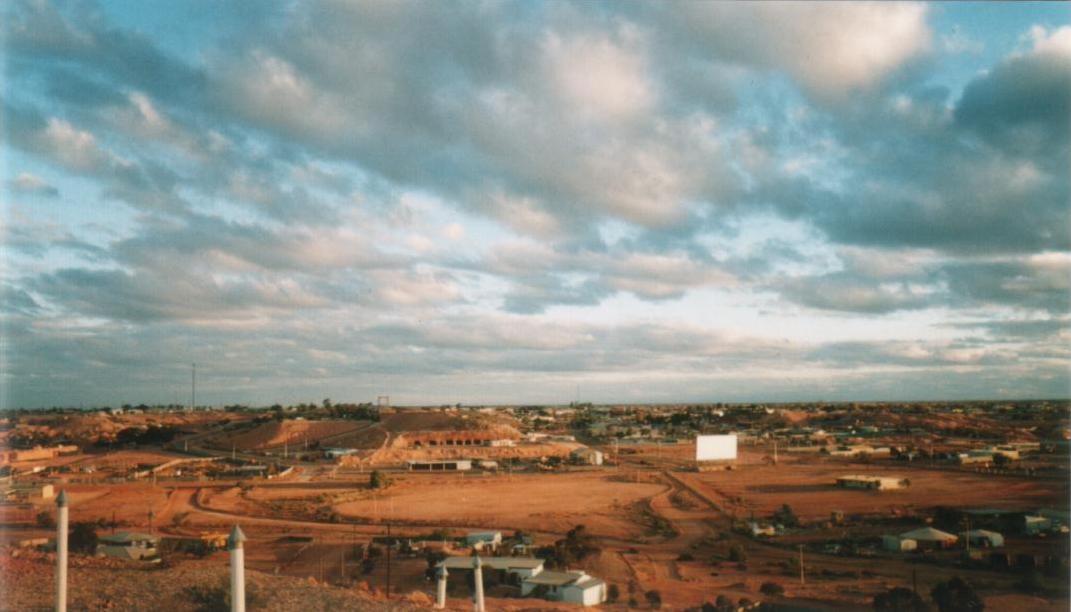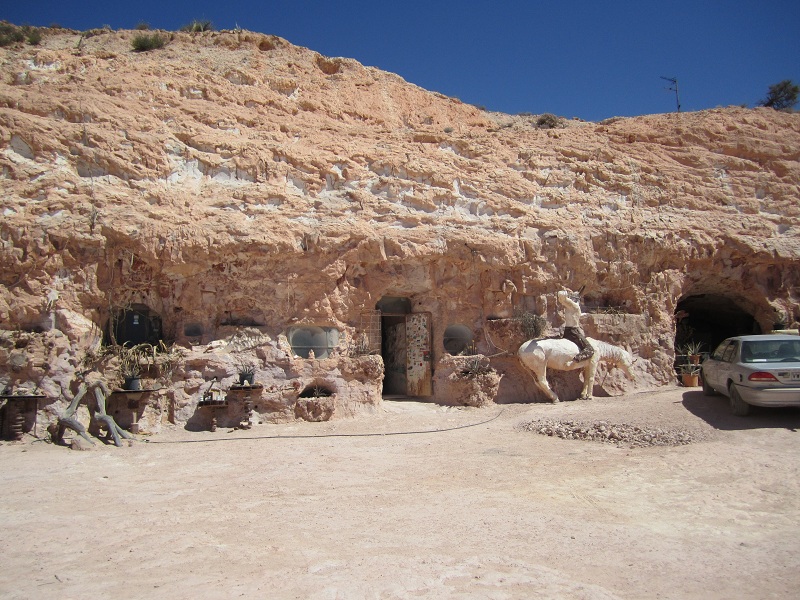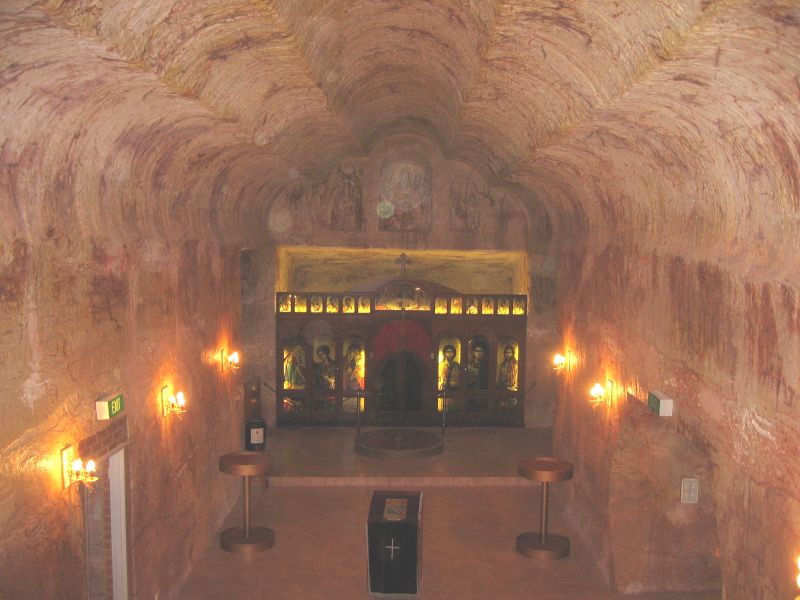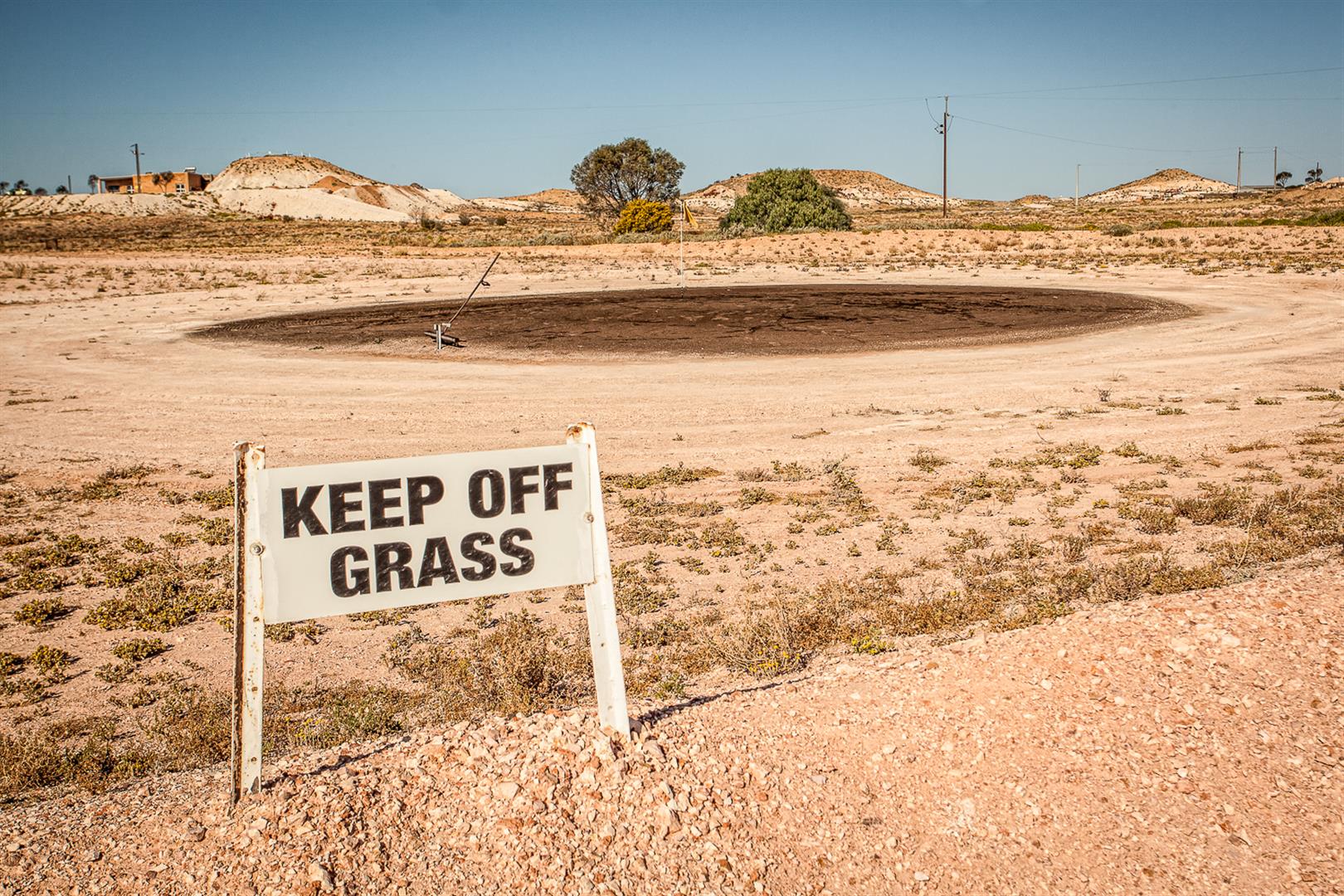The Land Down Under in the Land Down Under

Pictured above is Coober Pedy, a town of about 1,700 people in South Australia. Well, kind of.
Pictured above is the desert, and while Coober Pedy is definitely there, you can’t quite see most of it. That’s because it gets very hot in Coober Pedy — in the summer months (December to February), it often reaches 95 degrees Fahrenheit (35 degrees Celsius) in the shade, and temperatures in areas subject to direct sunlight can max out at 117 degrees Fahrenheit (47 degrees Celsius). If you’re in Coober Pedy, you’re better off not going outside.
In most situations, people simply wouldn’t bother — why live in the middle of nowhere and suffer through oppressively hot temperatures if you don’t have to? But Coober Pedy is special — it’s home to the world’s largest collection of gem-quality opal mines. Opals were first discovered there about a century ago, and since then, prospectors have been looking for a way to remain in the area. The solution?
Live underground.

Many of Coober Pedy’s buildings (like the entrance to the one seen above, via this blog) are more akin to caves than anything else. Called “dugouts,” the homes are literally dug out from the side of sandstone cliffs. Because the sun never hits inside its walls, the temperature stays generally constant — which is a big deal in a place where temperatures reach extreme highs.
And homes aren’t the only parts of Coober Pedy which are underground. In fact, most of the town is.

Pictured above, for example, is a bookstore in the town (via this Flickr user). You can see pretty clearly that the ceiling and walls match — which is because they’re one in the same. It’s not the only shop to call one of the shielded caves home, either; that’s the norm at Coober Pedy.
Because of this unique architecture and infrastructure, tourism is a major driver of Coober Pedy’s economy; per its website, the town “relies as much on tourism as the opal mining industry to provide the community with employment and sustainability.” (That said, the town struggles mightily; Atlas Obscura notes that “unemployment and poverty rates are high” in the area.) One major attraction is the local Serbian Orthodox church, pictured below, which was built (or, perhaps more accurately, sculpted) in 1992 and 1993. Made entirely out of sandstone save for some glass and stained glass accoutrements (and some electric lighting and the like), the church complex, per Wikipedia, features “a church, a community hall, a parish house and a religious school.”

But not all of the town’s attractions are in these dugouts. Despite the heat and barren conditions, golf — yes, the sport typically played on well-manicured lawns — is a well-regarded pastime in town. Golfers only really play at night (for obvious reasons) and use “glowing” golf balls per another Atlas Obscura write-up. Here’s a picture of the golf course.

And yes, the golf course is real — in fact, Wikipedia states that, “the Coober Pedy golf club is the only club in the world to enjoy reciprocal rights at The Royal and Ancient Golf Club of St Andrews,” perhaps the world’s most famous golf course. The sign, though, is a joke — grass doesn’t grow well in the middle of the desert.
Bonus Fact: Scottish novelist Sir Walter Scott is best known for writing Rob Roy and Ivanhoe, but the 19th century writer penned more than a dozen such stories. And one of them — accidentally — cratered the market for opals. In 1829, Scott wrote “Anne of Geierstein,” a piece of historical fiction which was very popular in its day. In the story, a major character wears an opal talisman which comes in contact with holy water and loses its color. The character who was wearing the talisman dies shortly thereafter. According to Wikipedia, fans of the book interpreted this to mean opals were bad luck, causing demand for the gemstones to fall by 50% in Europe and remain depressed for a generation.
From the Archives: The Temple of Rock Salt: A chapel built 300 feet underground, into a salt mine.
Take the Quiz: Name the Eight State/Territorial capitals of Australia.
Related: “Anne of Geierstein” by Sir Walter Scott.
